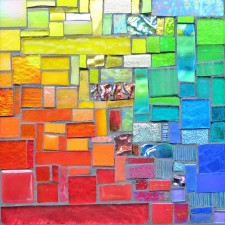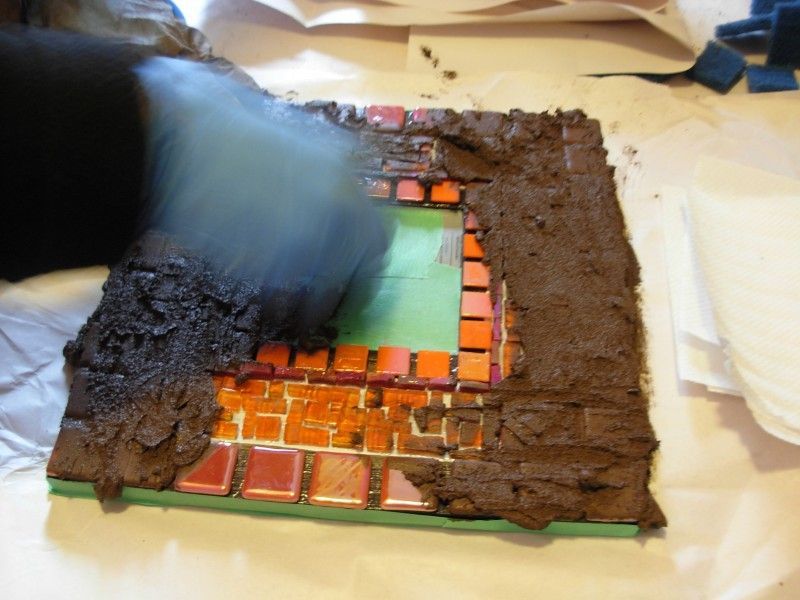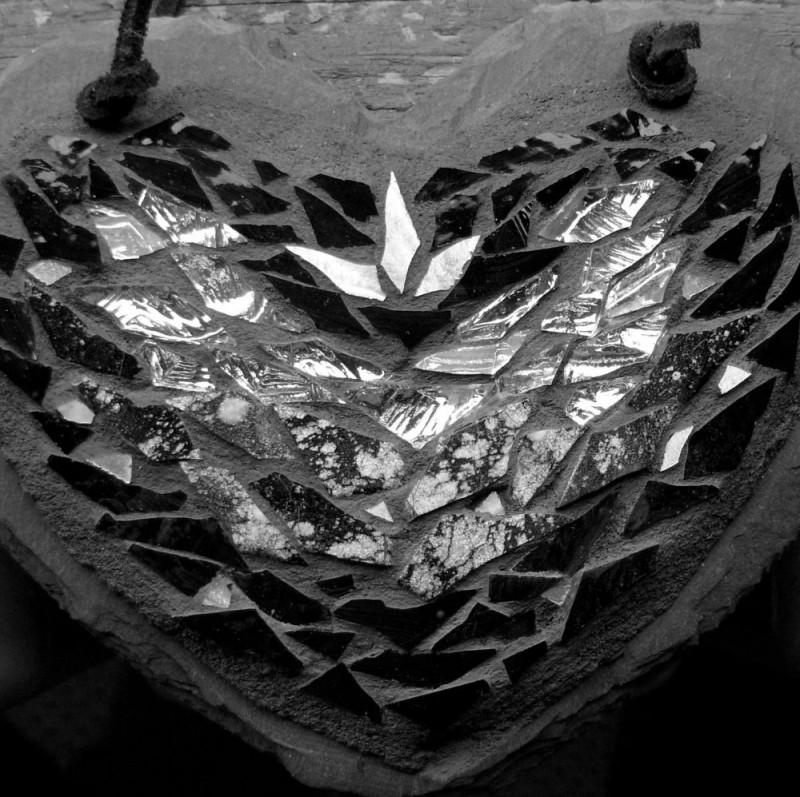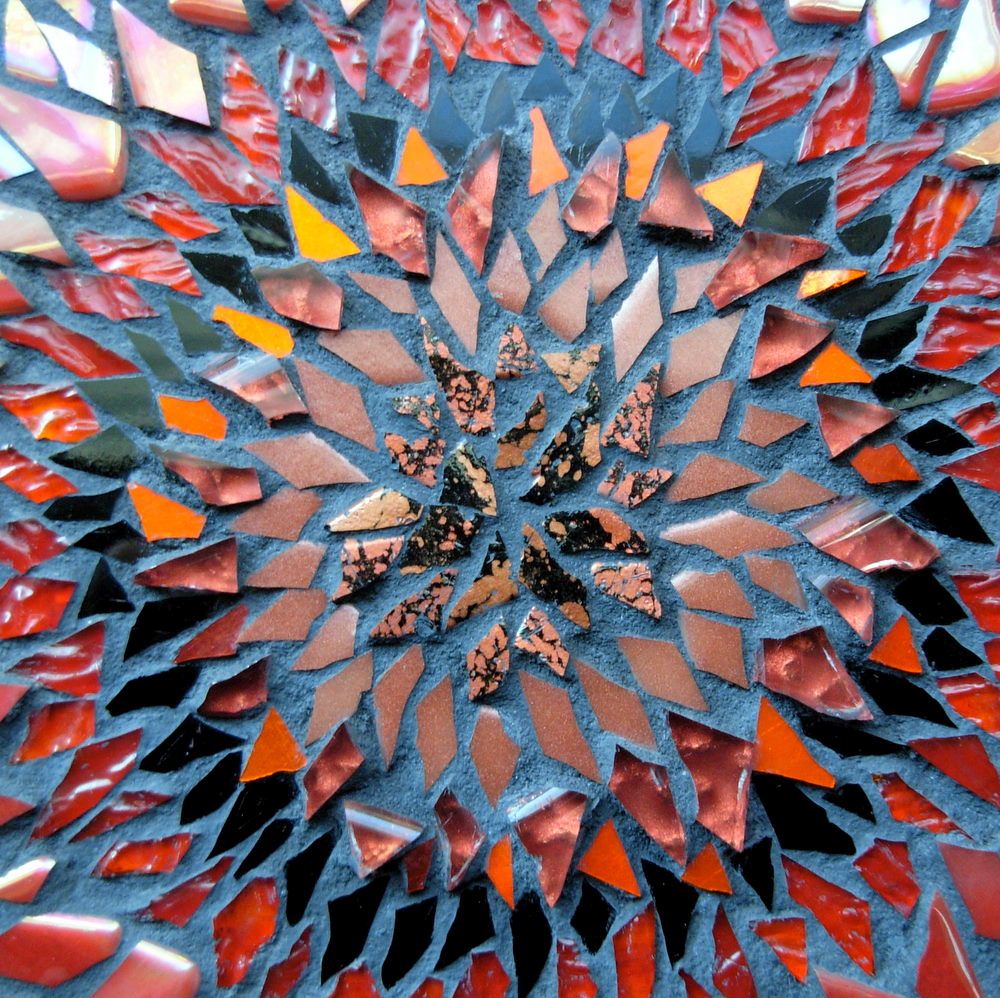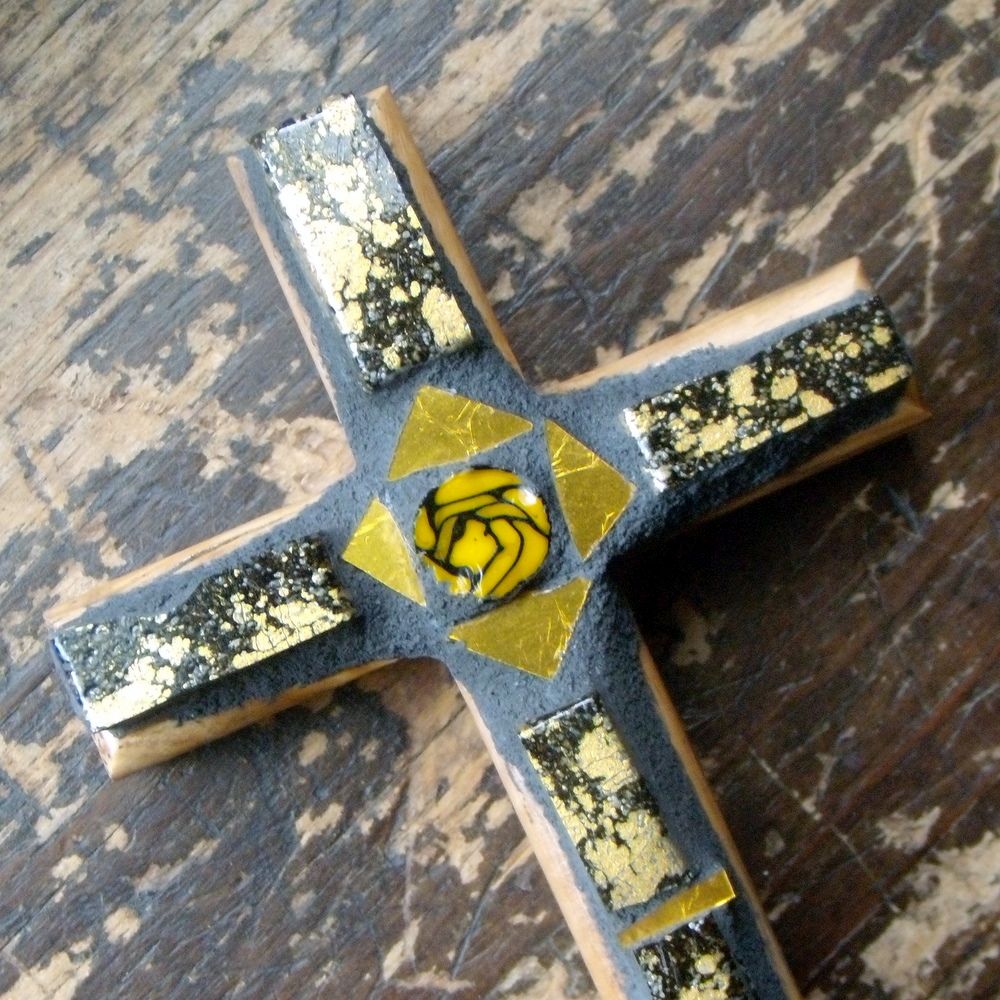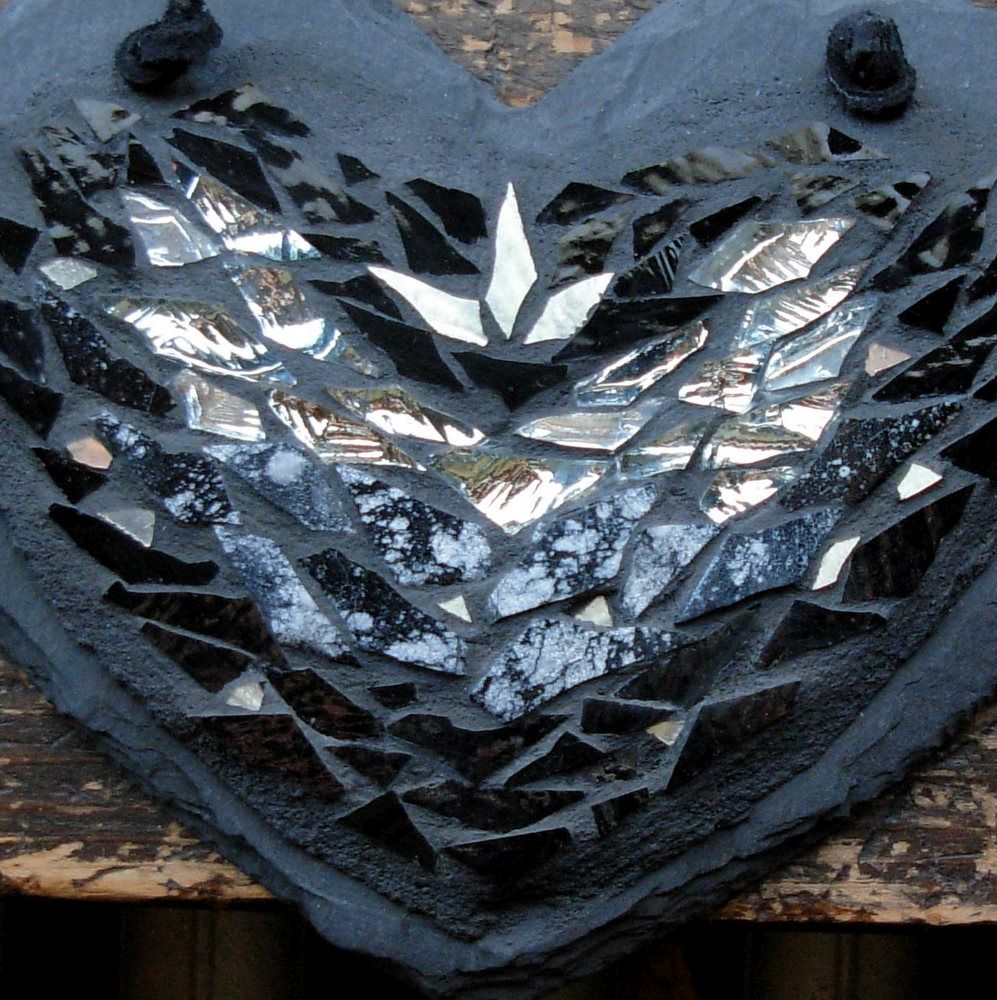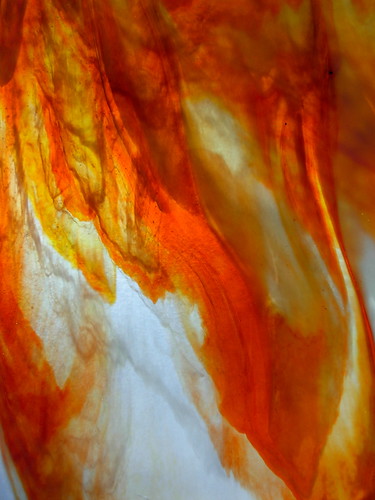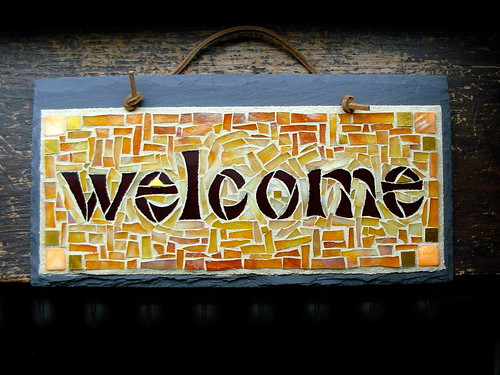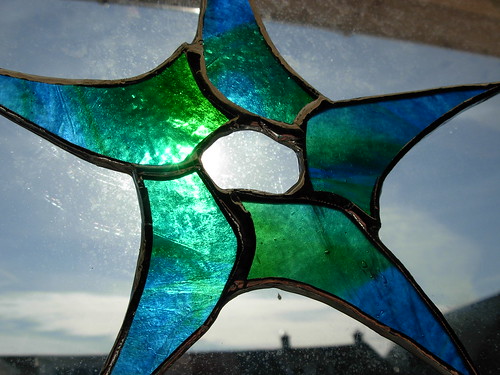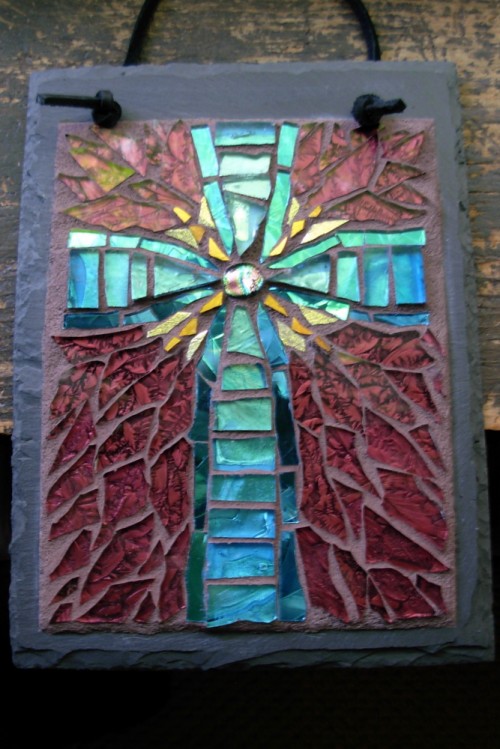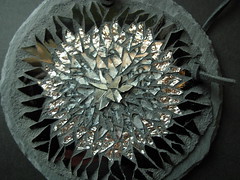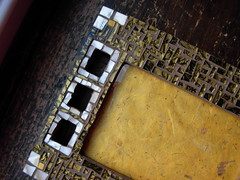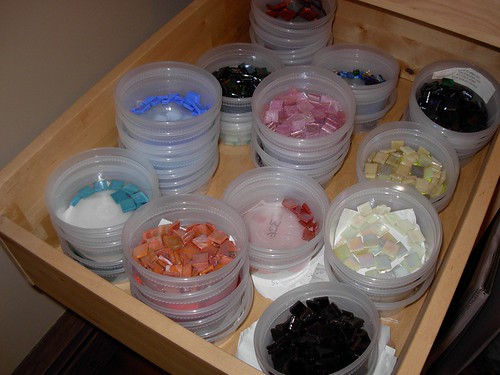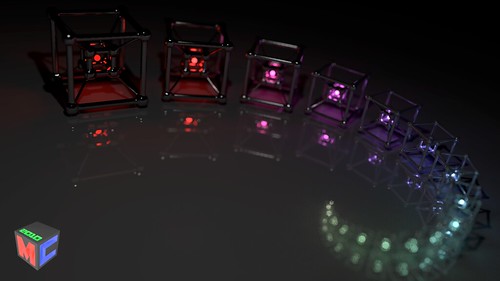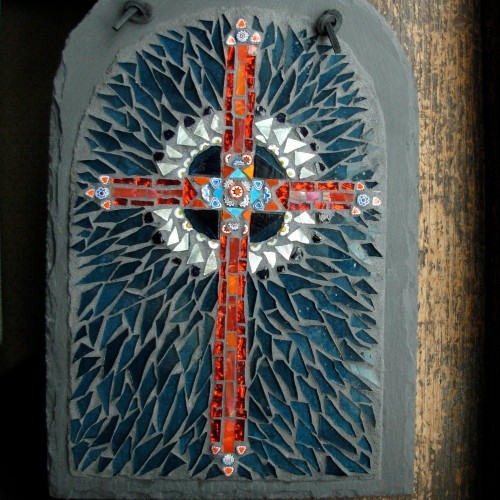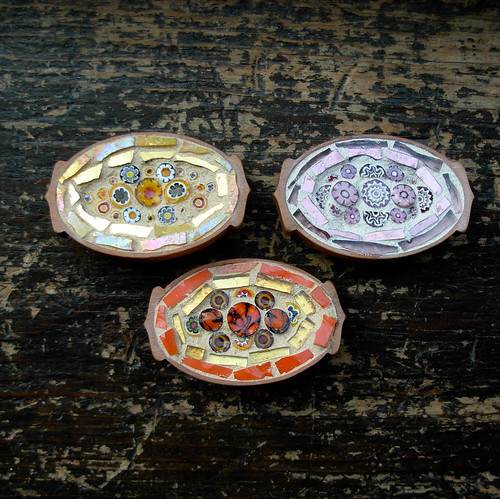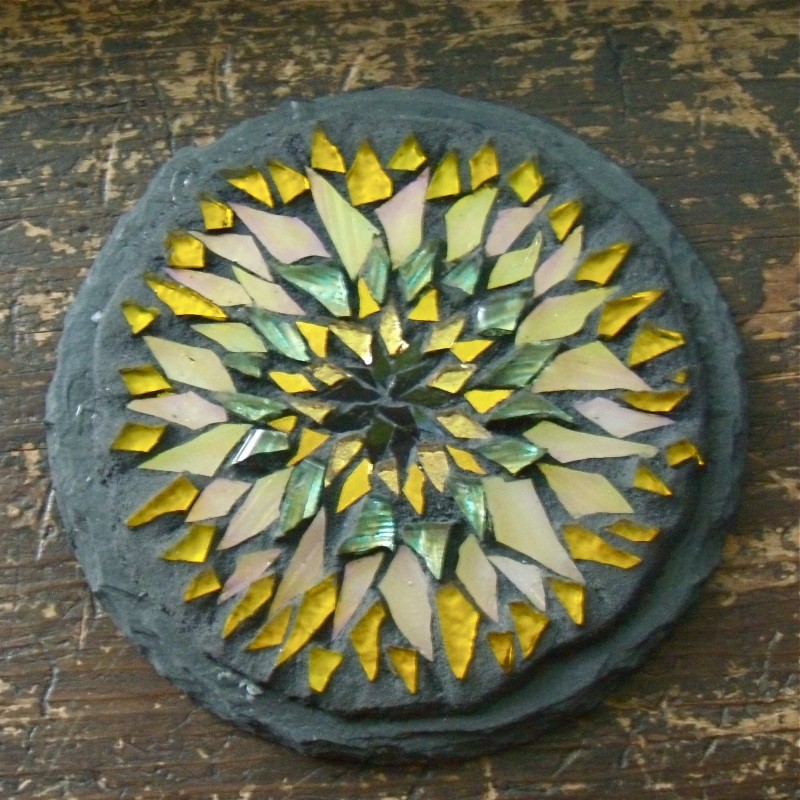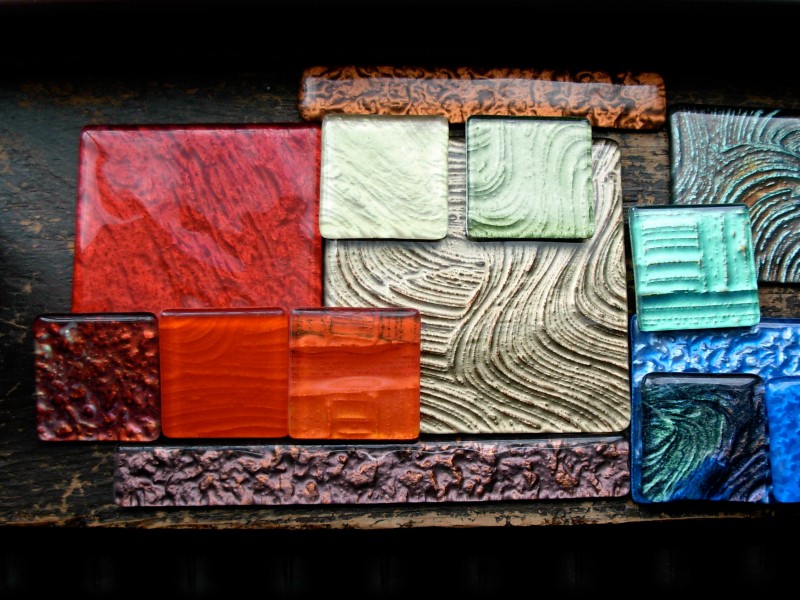In our partnership of marriage and craft, it is good that one of us has some geek talent, and that Stratoz puts it to such good use. Over Memorial Day weekend he took on iMovie and made 4 videos about our art, and created the Nutmeg Designs YouTube Channel. I admire Stratoz’s ability to learn by doing, to fully immerse himself in the process. He’s already thinking in video, imagining what would be brought to life with motion, sound, and jazz. My friend the “Grout Monster“, Joanne Leva, came over for a grout session, and here are the results of Stratoz’s handiwork(as well as Joanne’s and my hands!)
The latest Nutmeg Designs Production is a cool stop-motion-like chronicle of one of Stratoz’s mosaics. Yes, he mosaics. He is multi-talented! At first, I felt a twinge of protectiveness of my identity as the Mosaic Artist, but it’s fascinating to watch people at craft shows, as they hone in on the ones he’s made, and say that they are definitely made by someone else. His style is all his own, and I love how they incarnate his doodling designs. I do get covetous of his ease of grouting, with the sleek surfaces and larger pieces! Check out his Kurt Elling Sings Joe Jackson as a Mandala Comes into Being:
